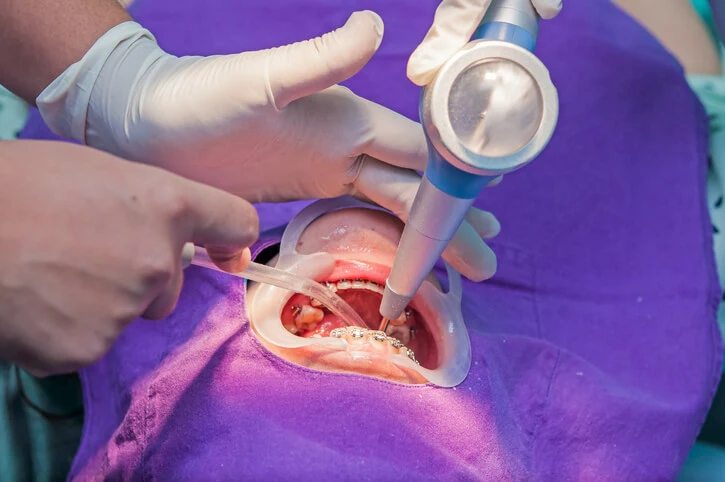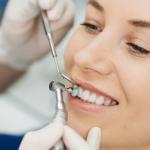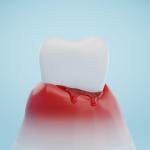Dental airflow treatment, also known as dental air polishing or airflow therapy, has emerged as an essential component of modern dental hygiene practices. This innovative technique involves the use of a controlled stream of air, water, and fine powder to remove stubborn stains, plaque, and biofilm from teeth surfaces effectively. Over the years, airflow treatment has gained popularity among patients and dental professionals due to its efficiency, comfort, and ability to enhance oral health outcomes. In this article, we delve into the intricacies of dental airflow, its benefits, applications, and the evolving landscape of airflow treatment in dentistry.
Understanding Dental Airflow
Dental airflow is a non-invasive procedure designed to achieve thorough dental cleaning and polishing. It utilizes a specialized device equipped with a handpiece connected to a compressed air and water source. The handpiece emits a controlled stream of air and water, combined with fine particles of abrasive powder, such as sodium bicarbonate or glycine, directed at the tooth surfaces. This high-velocity spray effectively dislodges and removes plaque, calculus, and extrinsic stains, leaving the teeth smooth, clean, and refreshed.
Advantages of Airflow Treatment
- Enhanced Cleaning Efficiency
- Gentle and Comfortable
- Time-saving
- Minimally Invasive
- Versatility

Enhanced Cleaning Efficiency
Unlike traditional scaling and polishing methods, dental airflow treatment offers superior cleaning efficacy, reaching areas that are difficult to access with conventional instruments. The combination of air, water, and abrasive powder effectively removes surface stains, plaque, and biofilm, resulting in a noticeably brighter and cleaner smile.
Gentle and Comfortable
Airflow treatment is gentle on the teeth and gums, making it suitable for patients with sensitive gums or dental restorations. The controlled pressure and fine particles minimize discomfort and reduce the risk of damage to the tooth enamel, ensuring a comfortable experience for patients.
Time-saving
Airflow treatment is a time-efficient procedure compared to traditional scaling and polishing methods. The high-velocity spray allows dental professionals to complete the cleaning process more quickly, reducing chair time and improving workflow efficiency in dental practices.
Minimally Invasive
Unlike invasive dental procedures, such as drilling or tooth extraction, airflow treatment is non-invasive and does not require anesthesia. Patients experience minimal discomfort and downtime, making it an attractive option for individuals seeking hassle-free dental hygiene maintenance.
Versatility
Airflow treatment is versatile and can be customized to meet the unique needs of each patient. Dental professionals can adjust the airflow pressure, water flow rate, and powder type to optimize cleaning efficiency while ensuring patient comfort and safety.
Applications of Airflow Treatment
- Routine Dental Cleanings
- Pre-procedural Preparation
- Periodontal Therapy
- Orthodontic Maintenance
- Implant Maintenance

Routine Dental Cleanings
Airflow treatment is commonly used as part of routine dental cleanings to remove surface stains, plaque, and biofilm from the teeth. It complements traditional scaling and polishing techniques, providing comprehensive cleaning and polishing for optimal oral hygiene.
Pre-procedural Preparation
Dental airflow treatment is often performed as a preparatory step before other dental procedures, such as tooth whitening, bonding, or restorative treatments. By removing surface stains and debris, airflow treatment enhances the effectiveness and longevity of subsequent dental interventions.
Periodontal Therapy
Airflow treatment can be beneficial for patients with periodontal disease or gingivitis. The high-velocity spray effectively removes plaque and biofilm from periodontal pockets, promoting periodontal health and reducing the risk of disease progression.
Orthodontic Maintenance
Patients undergoing orthodontic treatment with braces or aligners can benefit from airflow treatment to maintain oral hygiene and prevent the accumulation of plaque around orthodontic appliances. The fine particles of abrasive powder effectively clean hard-to-reach areas, ensuring optimal oral health during orthodontic treatment.
Implant Maintenance
Dental implants require regular maintenance to prevent peri-implantitis and ensure long-term success. Airflow treatment can be used to gently clean and polish implant surfaces, removing plaque and debris without causing damage to the implant or surrounding tissues.
The Evolving Landscape of Airflow Treatment
In recent years, dental airflow technology has continued to evolve, with advancements aimed at improving efficiency, safety, and patient comfort. Some notable developments include:
- Powder Particle Size
- Ergonomic Handpieces
- Integrated Cooling Systems
- Digital Integration
- Patient Education and Awareness
Powder Particle Size
Manufacturers have developed finer abrasive powders with smaller particle sizes, allowing for more precise cleaning and polishing without causing damage to the tooth enamel or soft tissues.
Ergonomic Handpieces
Newer airflow devices feature ergonomic handpieces designed for enhanced maneuverability and comfort during dental procedures. These lightweight handpieces reduce strain on the dental professional’s hand and wrist, improving overall ergonomics and workflow efficiency.
Integrated Cooling Systems
Some airflow devices are equipped with integrated cooling systems that help regulate the temperature of the air and water streams, preventing overheating and enhancing patient comfort during treatment.
Digital Integration
Digital dental workflow solutions are increasingly incorporating airflow treatment into their software platforms, allowing dental professionals to seamlessly integrate airflow procedures into their treatment plans and patient records.
Patient Education and Awareness
As awareness of the benefits of airflow treatment grows, dental practices are focusing on patient education and communication to promote its adoption. Through informative materials, demonstrations, and personalized recommendations, patients can make informed decisions about their oral health and treatment options.
Conclusion
Dental airflow treatment has revolutionized the way dental professionals approach oral hygiene maintenance, offering a safe, effective, and comfortable alternative to traditional cleaning methods. With its ability to remove stubborn stains, plaque, and biofilm from teeth surfaces, airflow treatment plays a vital role in promoting oral health and enhancing patient satisfaction. As technology continues to advance and awareness grows, airflow treatment is poised to become an integral component of comprehensive dental care, ensuring brighter smiles and healthier mouths for patients worldwide.





